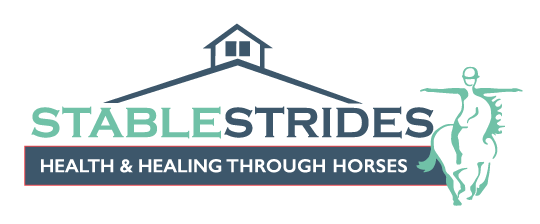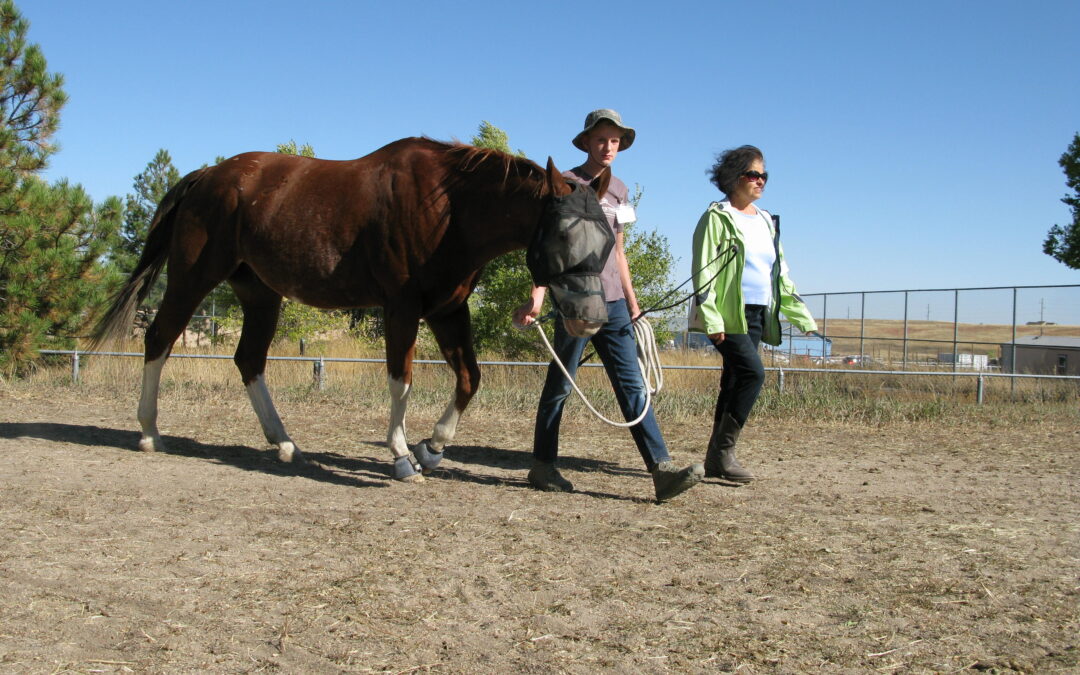By Maggie Roberts, Equine Director
How does a horse qualify to be a therapy horse?
This is a common question that gets asked when people are looking to rehome a horse. For StableStrides, we look at a lot of aspects to any horse that is a viable prospect. But how does the process start?
Typically, it starts with a phone call. We ask all sorts of questions about the horse to see how practical the horse really is for our programs. We bust a lot of myths or misconceptions in regard to what kind of horse is appropriate for therapy work. The first misconception that is corrected is that horses who are unsound, or who have a permanent fault to their natural gait, in the walk, trot, and canter are appropriate. The requirement is that all incoming horses work in all three of our programs, two of which are riding classes for children and adults. Second, we are a non-profit with a limited budget. Horses that have high medical or farrier needs, or daily medications that will not be continuously donated throughout their life at StableStrides, are not financially sustainable. The last myth that we bust is that all horses are suited to being a therapy horse. Think of any therapy stable setting as a lesson barn with all the toys you could see in an elementary school gym being used in lessons. Add in the disabilities that our clients live with daily. Finally add the six days a week, two clients per day schedule that our horses are expected to handle. It’s a lot. Just like we are not all made to teach kindergarten or high school, not all horses enjoy multiple people riding and working with them.
After the initial phone call where we hear all the fun stories and abilities about the horse, we go and visit the viable prospects. Two staff members go to where the horse is stabled to see it groomed, tacked, worked and then one of the StableStrides staff members hops on to feel movement and acceptability. During these visits, we look for conformation faults that could affect the horse’s longevity in the program. We look at the horse’s physical fitness, and whether the horse could be brought up to the work load capability within the six-week trial period. We also observe for any stable vices that could be detrimental to the overall health of the herd.
Finally, there is the trial period. We aim for it to take no more than 6 weeks, but sometimes, it’s extended for unforeseen circumstances. The first two weeks are a mandatory quarantine period where the horse is kept separate from our therapy herd. They are stalled to where at least one horse is seen, but there isn’t a chance for nose to nose contact. They are turned out in a pen roughly the size of a stall-run where they again, can see horses. The horse is worked during the quarantine period with extra precautions taken to ensure anything the horse could potentially carry won’t spread to other horses.
Activities and trainings that happen during the trial period include general exercise in and outside an arena, introducing our different mounting processes, introducing toys and how they’ll be used, introducing small pieces of vaulting, and brushing up on the horse’s lunging skills. Our veterinarian, Colorado Equine Veterinary Services, donates a pre-purchase exam for all incoming horses for our program. This will happen sometime during the trial period as well. Findings are shared with the owner, and it is a test that shows whether or not the horse returns home or continues with their therapy training. The horse’s final exam encompasses all the above trainings condensed into an hour and half. If they pass, the owner is notified and the agreed upon terms of use or ownership are completed. Lastly, the on-boarding process of matching clients to the new horse is started.


Recent Comments